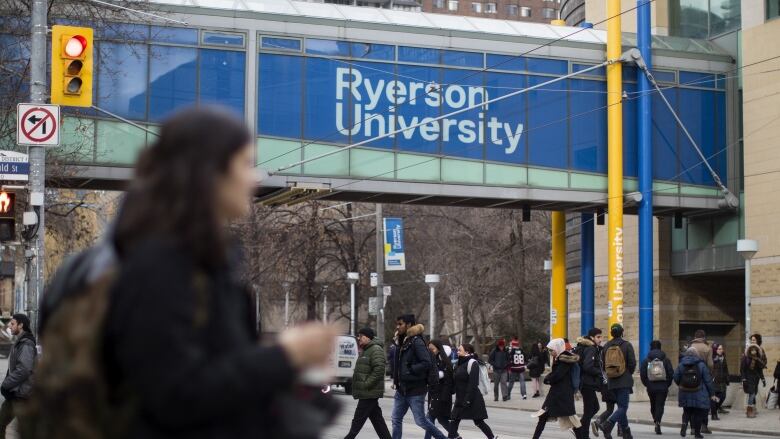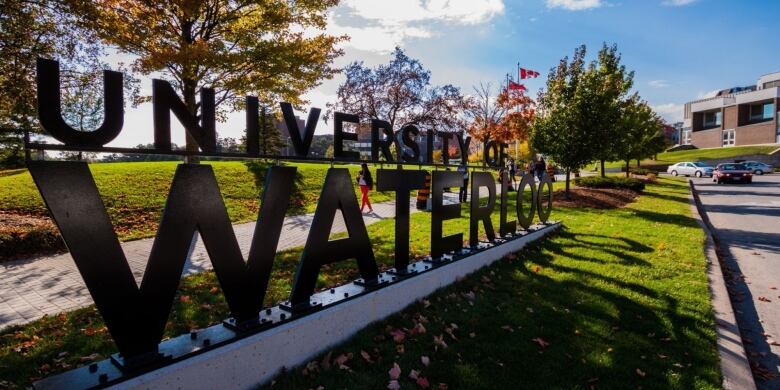How the Ford government will decide on university, college funding
Post-secondary institutions face losing share of $3B if graduates' jobs, earnings fall short

CBCNews has learned more details about how the Ford government will measure the performance of Ontario's colleges and universities to determine the total fundingthey receive.
As much as$3 billion annually is at stake for Ontario's 45 publicly-funded post-secondary institutions.
In last month's budget, the government said it would tie 60 per cent of its post-secondary funding to how universities and colleges performon 10 measures, but did not reveal specifics about the criteria.
New details are found in a Ministry of Training, Colleges and Universities briefing document marked "confidential," obtained by CBC News.It lays out each of the 10 measures, sometimes referred to as metrics, and the schedule for implementing them.
Six of the metrics are related to skills and job outcomes:
- Graduate earnings.
- Number and proportion of graduates in programs with experiential learning.
- Skills and competencies.
- Proportion of graduates employed full-time in a related or partially-related field.
- Proportion of students in identified area of strength.
- Graduation rate.

The other four metrics are related to what the government calls "economic and community impact."
On these, there is some variation between the measurements for colleges and universities. Both will be evaluated on funding received from industry sources, as well as on "community/local impact," a simple measure of the student population as a proportion of the local population.
Universities will be measured on federal research funding (from such agencies as theNatural Sciences and Engineering Research Council, NSERC). Alternatively, colleges will be measured on an apprenticeship-related metric thatis marked "TBD" for "to be determined."
Finally, each individual college and university will have its own "institution-specificeconomic impact metric."
The ministry document does not explain how that or some of the other measurements would be calculated. The metric for skills and competencies is also labelled "TBD."

"The government rolled this out with much less detail than you would expect given the magnitude of the change they're contemplating," said Alex Usher, president of Higher Education Strategy Associates, a Toronto-based consulting firm.
Usher supports the principle of performance-based funding.
"It gives governments and taxpayers a sense that [universities and colleges]are spending money to a purpose," he said in an interview.
"We've got $5 billion in public money going into the province's universities and colleges and I think people like to know that there are certain objectives that are being accomplished with that money."
The issue, said Usher, is whether the metrics are well-designed.
"I don't think we know enough about the program yet to be able to say that with confidence one wayor the other," he said.
The ministry briefing document shows that starting in the 2020-21 academic year, 25 per cent of provincial grants to post-secondary institutions (about $1.27billion) will be "performance/outcomes-based funding."
That will rise by 10 percentage points each year, until 2024-25, when it peaks at 60 per cent ($3.04 billion).
Currently, only 1.2 per cent of college funding and 1.4 per cent of university funding is tied to outcomes.

The ministry document says the post-secondaryinstitutions will be "measured against themselves. Targets are based on an institution's historical data & established criteria."
The measures "are balanced and broad enough to recognize the individual strengths and mandates of Ontario's post-secondary institutions in serving local communities and economies,"says the document.
Usherhas seen details of the metrics anddescribes them as mixed. He said some are "badly designed or just plain stupid" and puts the community/local impact metric in that category.
"If you really want to rig something so that Nipissingcomes out well, just hand them the money, don't pretend it's a performance indicator." NIpissing University is located in North Bay, the smallest Ontario city with a university.
One of the government's own agencies is advising it to choose the metrics carefully.

The Higher EducationQuality Council of Ontario (HEQCO) was created by the province to assesspost-secondary institutions on a range of measures. In a paper published last week, HEQCOsays the performance-based metrics must be "meaningful and informative."
"Meaningful performance measurement must focus on impact and outcomes," write the authors, led by HEQCO'spresident and chief executive Harvey Weingarten.
"What or how much have students learned, and what is the economic and social impact of the institutions and a well-educated province?"
The report says the key outcomes to be measured should be based on the priority goalsfor higher education, as identified by government policy.
The Ford government's new approach is "quite aligned with" what HEQCO is suggesting, said Weingartenin an interview.
Getting a good job is one of the primary reason students want a post-secondary education, said Weingarten.
"It seems perfectly sensible to me to ask the question, 'Are students from programs getting good jobs?'" he said.
"We can measure these things with a level of accuracy and precision we could not do before."

The Ontario Confederation of University Faculty Associations (OCUFA) is raising concerns about the plan, calling it "a drastic move towards tying funding to performance outcomes."
The move will "create inequities and slowly but certainly undermine the integrity of Ontario's postsecondary education system,"OCUFA saysin a new post on its website.
"This is something that's being used a lot in a number of different states in the U.S. and nowhereis there any research to suggest that it improves education,"said the association's president, Gyllian Phillips, in an interview.
The Council of Ontario Universities, which represents administration at the province's 21 universities, declined a request for an interview.












_(720p).jpg)


 OFFICIAL HD MUSIC VIDEO.jpg)
.jpg)



























































































